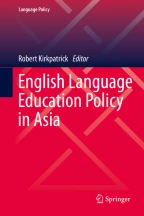
The integration of the ASEAN Economic Community (AEC) in 2015, as well as the United Nation’s call for Education for All (EFA) by 2015, has pushed the Philippine government to revamp the country’s educational system. Such revamp involves a review of the effectiveness of English language education (ELE) in the country, which may be described as currently at a crossroads, as stakeholders strive to address issues of developing the English language competencies of Filipino students on the one hand, and the strengthening of academic achievement on the other. ELE in the Philippines, which began during the American colonial period in the nineteenth century, has been found wanting in significantly contributing to increased learning outcomes among Filipino students. ELE policies have been beset with issues of alignment and coherence in the areas of curriculum and assessment, as well as challenges in the implementation of genuine reform. In addition, ELE has been implemented at the expense of literacy in the mother tongues. This chapter provides an overview of how ELE in the Philippines is evolving – learning from past mistakes and preparing for the future. The chapter is divided into five major parts, namely, (1) overview of the Philippine educational system; (2) ELE from the American colonial period to Martial Law; (3) Bilingual education and educational reforms from 1974 to 2010; (4) Mother-tongue based multilingual education (MTBMLE) and the K to 12 reform; and (5) prospects and possibilities for ELE in the Philippines. In this chapter, we make a case for Philippine ELE that strives to address the demands of the international community, but also upholds local culture through the use of the mother tongues.
This is a preview of subscription content, log in via an institution to check access.